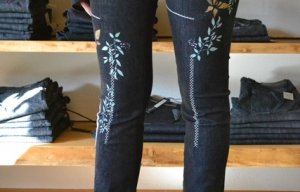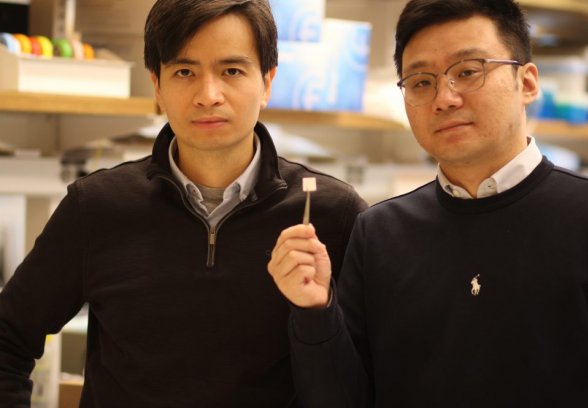
Kansai University and Teijin develop piezoelectric wearable sensors
Poly-L lactic acid (PLLA) polymer produces a small burst of electrical current when squeezed.

20th January 2022
Innovation in Textiles
|
Storrs, CN, USA
Arthritis is a common and painful disease caused by damage to the joints. Normally pads of cartilage cushion them, but injuries or age can wear these pads away. As cartilage deteriorates, bone begins to hit bone, and everyday activities like walking become painful.
The best treatments available try to replace the damaged cartilage with a healthy piece taken from elsewhere in the body or a donor, but healthy cartilage is in limited supply and from third party sources can be rejected by the immune system.
The best possible treatment would be to regrow healthy cartilage in the damaged joint itself. Some researchers have tried amplifying chemical growth factors to induce the body to grow cartilage on its own and other attempts have relied on a bioengineered scaffold to give the body a template for the fresh tissue, but neither of these approaches is totally successful, even in combination.
“The regrown cartilage doesn’t behave like native cartilage,” explained Thanh Nguyen, an assistant professor in the Department of Mechanical Engineering at University of Connecticut (Uconn). “It breaks, under the normal stresses of the joint.”
Nguyen’s lab has also been working on cartilage regeneration and discovered that electrical signals are the key to normal growth. The researchers have designed a tissue scaffold made from nanofibes of poly-L lactic acid (PLLA), a biodegradable polymer often used to stitch up surgical wounds. The nanomaterial has piezo-electrical properties and when squeezed, produces a small burst of electrical current. The regular movement of a joint, such as a person walking, can cause the PLLA scaffold to generate a weak but steady electrical field that encourages cells to colonise it and grow into cartilage. No outside growth factors or stem cells – potentially toxic or with the risk of undesired adverse events – are necessary, and crucially, the cartilage that grows is mechanically robust.
The team recently tested the scaffold in the knee of an injured rabbit which was encouraged to hop on a treadmill to exercise after implantation, and just as predicted, the cartilage grew back normally.
“Piezoelectricity is a phenomenon that also exists in the human body,” said Yang Liu, a postdoctoral fellow in Nguyen’s group. “Bone, cartilage, collagen, DNA and various proteins have a piezoelectric response. Our approach to healing cartilage is highly clinically translational, and we will look into the related healing mechanism.”
While the results are exciting, Nguyen is cautious.
“This is a fascinating result, but we need to test it in a larger animal, one with a size and weight closer to a human,” he said.
His lab would want to observe the animals treated for at least a year, or probably two, to make sure the cartilage is durable. And it would be ideal to test the PLLA scaffolds in older animals, too, since arthritis is normally a disease of old age in humans. Young animals heal more easily and if the piezoelectric scaffolding helps older animals heal as well, it could prove a bioengineering breakthrough.

Business intelligence for the fibre, textiles and apparel industries: technologies, innovations, markets, investments, trade policy, sourcing, strategy...
Find out more